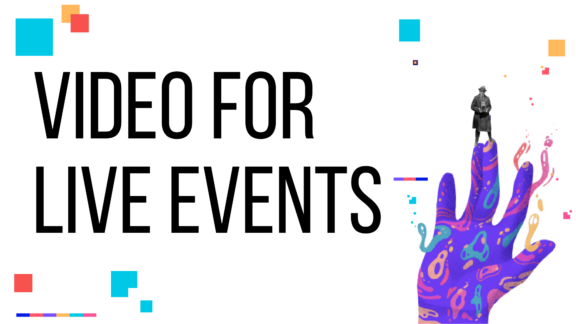- All
- 3D
- Animation
- AWS Activate
- B2B
- B2C
- Bit of Both
- Blog
- Cisco
- DB Culture
- Education
- Emmy® Award Winning
- Entertainment
- Explainer LP
- Featured
- Finance
- Fitness
- Healthcare
- HIMSS
- InBound19
- Live Action
- Live Action LP
- Manufacturing
- Marketing
- Motion Graphics LP
- Software + Tech
- The Drip
- Uncategorized
- Video Marketing
- What We Do Bit Of Both
- What We Do Live Action
4K to 8K: Is it Overkill and What Does it Mean to Our Industry
May 2, 2016

Filmmakers have been capturing 4K content for a while now. But it’s taken some time for the world to get on board the 4K-volution. Just as the television and streaming industry is catching up, an 8K sensor upgrade has been released. Is it overkill? What does this mean to our industry? Will we ever catch up?
 More pixels means better, sharper, smoother, life-like detail.
As nifty as 4K sounds, it’s been a slow journey to mainstream adoption. Few of us currently own TVs or monitors with the display technology to appreciate 4K content. Also, many argue whether the human eye is able to perceive such detail. According to CBC News, in order to truly experience the 4K difference you need, at least, a 48-inch screen, and you have to get pretty cozy with it – plus, of course, you must be watching actual 4K content.
So when you hear about 6K AND 8K it might seem like total overkill. But for us production snobs, it’s like music to our ears.
Here at Digital Brew, we’ve filmed with the Red One, Red Epic, and Sony F55 – all 4K.
The quality is truly noticeable. When compressing videos from 4K to HD streamable video the images are definitely clearer and cleaner. Shooting at such a high resolution gives editors and VFX engineers an opportunity to zoom into images very far and reframe without losing information. If you’re shooting in 8K, you could literally zoom in twice as much, and you’d still have a 4K image, and even further, HD. Not bad.
More pixels means better, sharper, smoother, life-like detail.
As nifty as 4K sounds, it’s been a slow journey to mainstream adoption. Few of us currently own TVs or monitors with the display technology to appreciate 4K content. Also, many argue whether the human eye is able to perceive such detail. According to CBC News, in order to truly experience the 4K difference you need, at least, a 48-inch screen, and you have to get pretty cozy with it – plus, of course, you must be watching actual 4K content.
So when you hear about 6K AND 8K it might seem like total overkill. But for us production snobs, it’s like music to our ears.
Here at Digital Brew, we’ve filmed with the Red One, Red Epic, and Sony F55 – all 4K.
The quality is truly noticeable. When compressing videos from 4K to HD streamable video the images are definitely clearer and cleaner. Shooting at such a high resolution gives editors and VFX engineers an opportunity to zoom into images very far and reframe without losing information. If you’re shooting in 8K, you could literally zoom in twice as much, and you’d still have a 4K image, and even further, HD. Not bad.
 Been to the movies lately? If you happened to be at an AMC theatre, you’ve probably already watched a 4K movie. Back in 2009, AMC Entertainment agreed to install Sony 4K projection systems in cinemas across the nation. From recent blockbusters, like The Revenant and Spectre 007, to not so new ones, like 2012’s Spiderman, major film studios, like Sony, are releasing more and more 4K movies.
4K content and display technology is expected to become more available to the consumer by the end of this year.
Been to the movies lately? If you happened to be at an AMC theatre, you’ve probably already watched a 4K movie. Back in 2009, AMC Entertainment agreed to install Sony 4K projection systems in cinemas across the nation. From recent blockbusters, like The Revenant and Spectre 007, to not so new ones, like 2012’s Spiderman, major film studios, like Sony, are releasing more and more 4K movies.
4K content and display technology is expected to become more available to the consumer by the end of this year.

Let’s start at the beginning.
4K broke the cinematography scene in 2003 with Dalsa Origin’s release of the first 4K commercial camera. Since then 4K resolution has become the standard in the film industry. So what’s the buzz all about? What’s 4K, anyways? 4K literally means 4,000, as in 4,000 pixels. 4K, also known as Ultra HD, is used when referring to content and display devices with a 4,096 x 2,160 pixel resolution. That’s a total of 8,847,360 pixels. That’s a lot more pixels – 4 times more, to be exact – in comparison to today’s most common broadcast resolution, FullHD.
How can you watch 4K?
The 4K-volution has just started gaining momentum in the television and entertainment industry. Even though commercial 4K TVs started coming out in 2013, they just recently started going mainstream thanks to the recent drop in prices. Sony, Samsung, LG and VIZIO are among some of the brands with 4K TVs already in the market. You can get your hands on one for these puppies for just under $1,000. Though, prices easily go up to $10,000. Streaming services have been ahead of the 4K game for a while now. YouTube made 4K streaming available back in 2010 and Netflix has been offering a plethora of 4K content since 2014. In fact, the paid streaming giant is now filming all of its original content in Ultra HD – season 3 of House of Cards was filmed in 6K – further solidifying its commitment to the movement.


